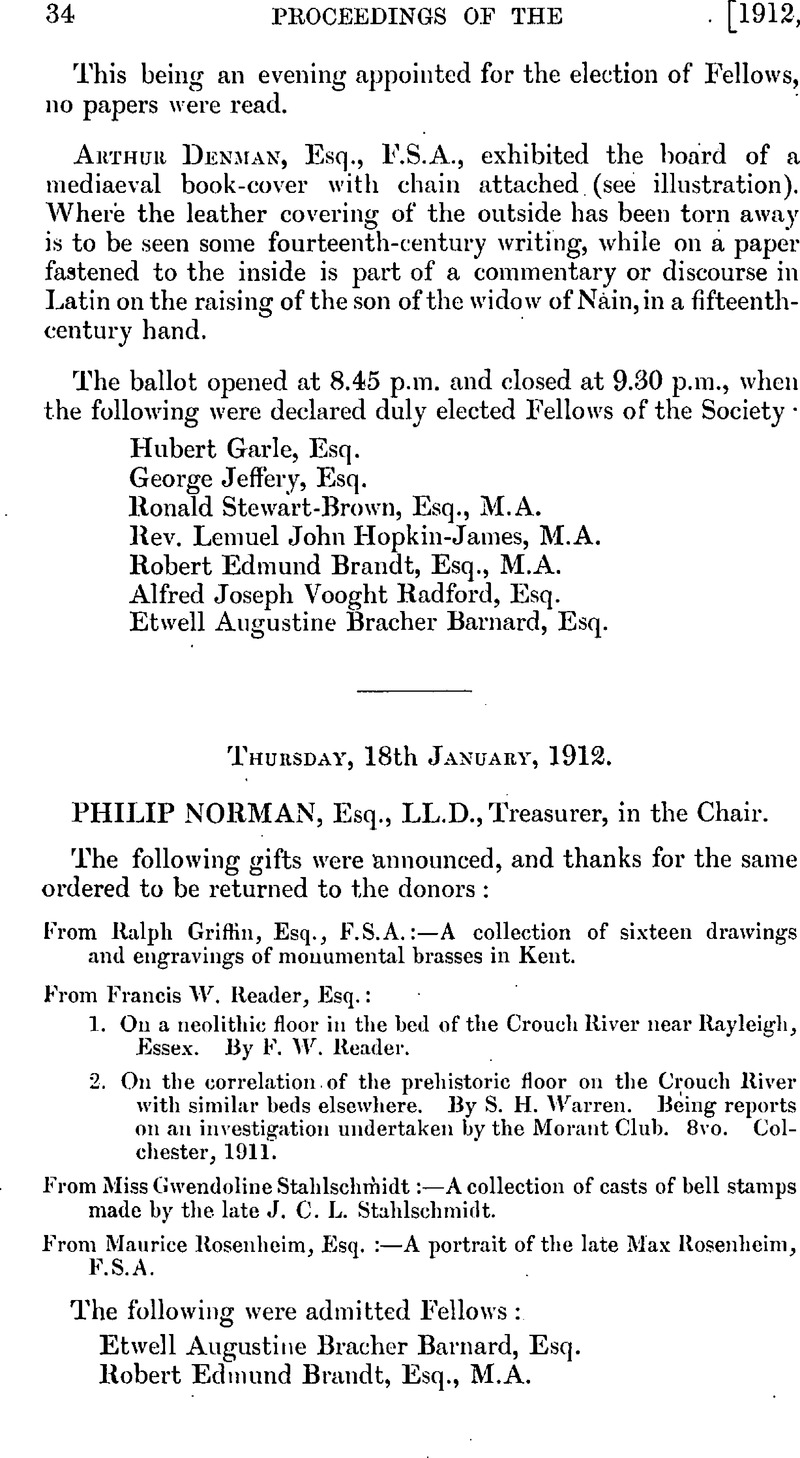No CrossRef data available.
Published online by Cambridge University Press: 10 May 2010

page 35 note 1 Both sites are in France. La Madeleine is a little south of Nancy; Lavoye lies north-west of it, in the department of Meuse. R. Forrer (Töpfereien von Heiligenberg and Itteniweiler, Stuttgart, 1911, pp. 185, 288 note) gives some details about these and neighbouring sites.
page 36 note 1 For the twisted ‘horn ’ see ORL. Niederberg, plate iv. 9, Kapersburg, v. 19, Zugmantel, xxiii. 5, Ems, ii. 7 ; for the two trefoils, a piece from the Saalburg which seems to be assignable with some certainty to La Madeleine ; for the little human figure, ORL. Stockstadt, xvii. 39.
page 36 note 2 D. Lysons, Bucks. (1806), pp. 483, 485, copied by Lipscomb (iv. 29) and later writers. Some of the Bishop's information came from Browne Willis, and Miss M. V. Taylor supplies me with references to Willis's MSS. in the Bodleian, no. 98, fo. 35, and 100, fo. 133, which, however, add little toour other knowledge.
page 36 note 37 Itin. Ant., 471, 476, 479. In two of the passages the name is spelt Magiovinium, in the third (476), Magiovintum ; beyond this fact I know no reason for preferring the former to the latter spelling.
page 42 note 1 For convenience I shall denote them hy the name ‘Yeovil tores ’ or ‘tores of Yeovil type ’, following the geological custom of naming after a typical instance.
page 42 note 2 What appear to he fragments of one or more Yeovil tores were found with certain niconical gold beads at Beerhackett in Dorset (seelist, p. 45). A similar gold bead formed part of a hoard, recently found at Adabrock in Lewis, consisting of three ‘razors’, a socketed celt, gouge, hammer, and spear-head. Proc. Soc. Ant. Scot., xlv (1910–11), p. 27.
page 44 note 1 Two are in the possession of a Bournemouth dealer ; one belongs to Mr. Herbert Druitt of Christchurch. They were all found on Pokesdown.
page 45 note 1 In these inventories those items which are marked with an asterisk have not been inserted in the map. Those described as at Dublin are in the National Museum there.
page 50 note 1 The letter which appears to be U is a badly struck V.
page 50 note 2 Cf. Mainz Museum Report for 1899–1900, pi. 3, figs. 13, 14.